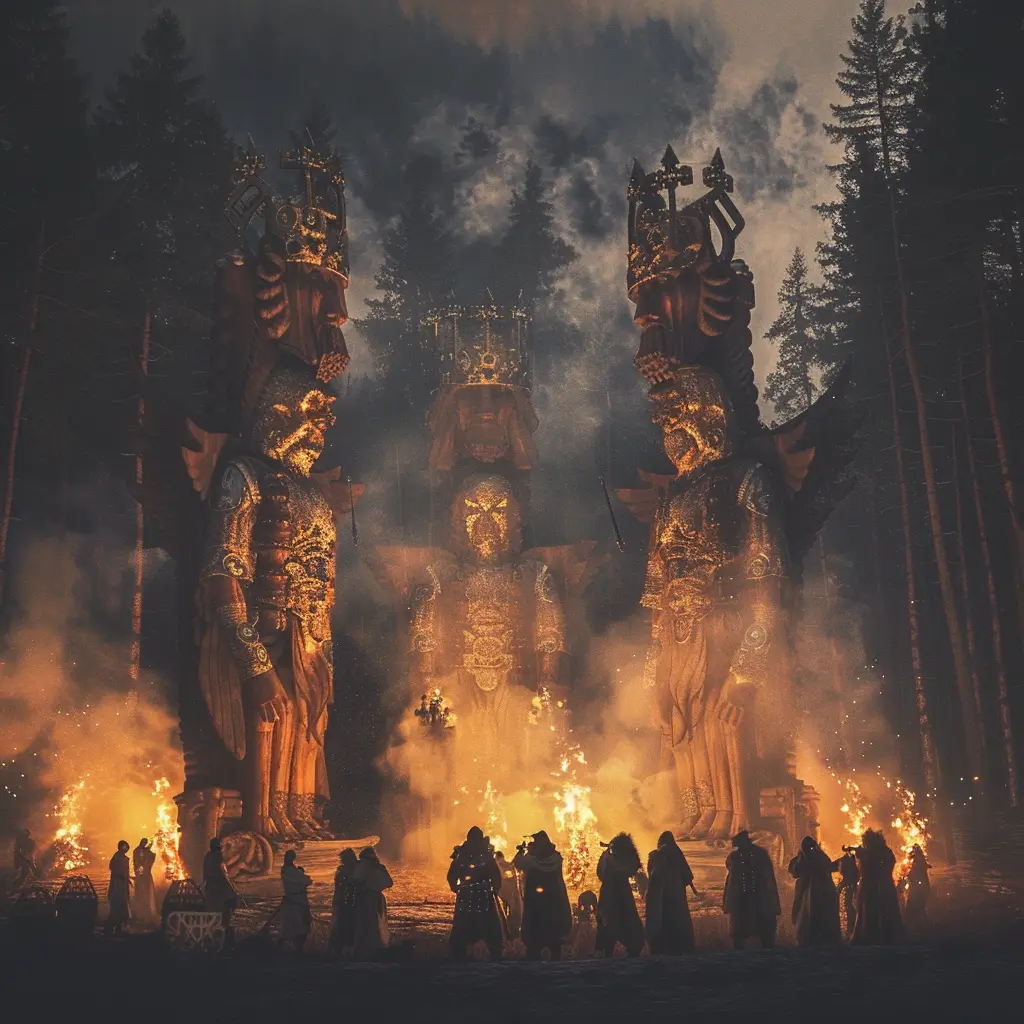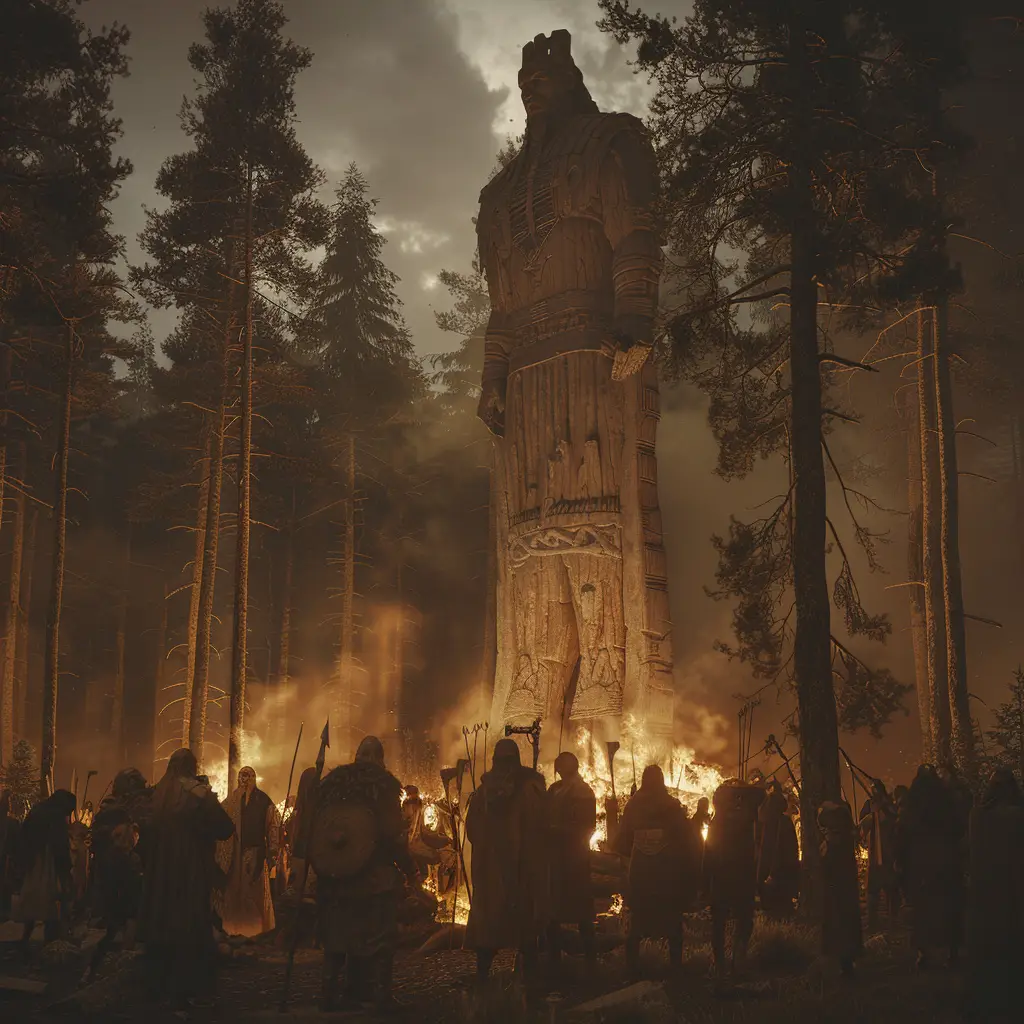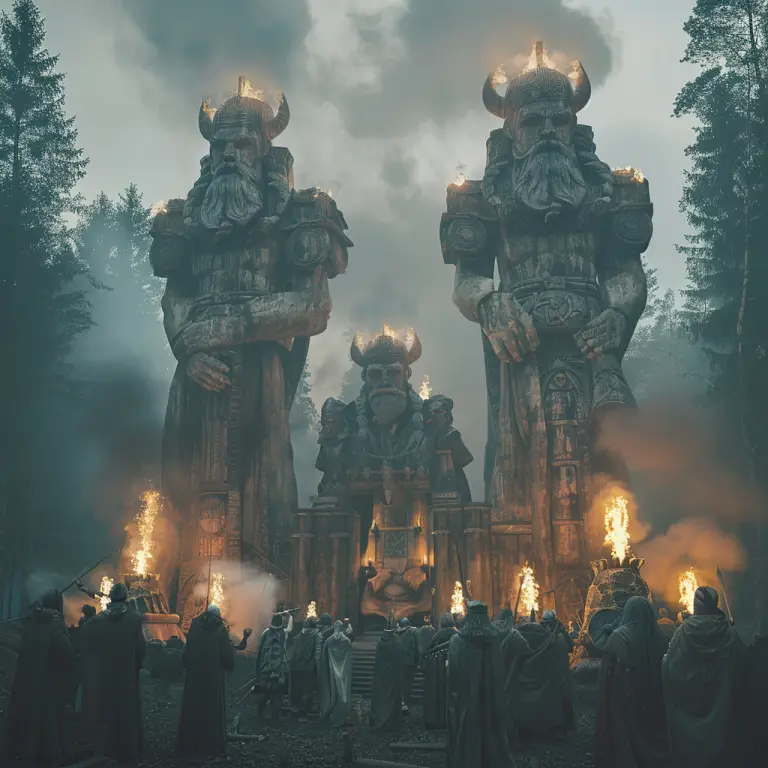The Uppsala Blót was a significant sacrificial ritual and festival in Norse paganism, held at the great temple in Old Uppsala, Sweden. This blót (sacrifice) was dedicated to the Norse gods, particularly Odin, Thor, and Frey, and was celebrated to seek the gods’ blessings for prosperity, victory, and fertility.
The Uppsala Blót is one of the most detailed accounts of Norse sacrificial practices, thanks to the writings of the German chronicler Adam of Bremen in the 11th century.
The Temple at Uppsala: The temple at Uppsala was the primary religious and cultural centre of pagan Sweden. According to Adam of Bremen, it was richly decorated with gold, and inside were large statues of the gods, including Odin, Thor, and Frey. Each god served a different purpose in the lives of the people:
Thor was associated with weather, crops, and general protection.
Odin was invoked for victory in battle.
Frey was connected with fertility, peace, and prosperity.
This temple was likely the most prominent holy site in Scandinavia, serving as a place of pilgrimage and reverence.
Frequency and Timing: The Uppsala Blót was reportedly held every nine years and lasted for nine days. It was a grand event that brought together people from across the region, including nobles, warriors, and farmers.
The sacrifices likely took place in early spring, around the time of the spring equinox, to ensure a prosperous growing season.
Sacrifices and Rituals: The Uppsala Blót involved sacrifices of both animals and, occasionally, humans. Horses and other livestock were offered to the gods, but in particularly dire times, people were also sacrificed. According to Adam of Bremen, nine of each species, including humans, were sacrificed, emphasizing the number nine’s sacred significance in Norse mythology.
The bodies of sacrificial victims were reportedly hung from trees in the temple grove, which became sacred as a result. This gruesome display was believed to honour the gods, especially Odin, who was closely associated with both sacrifice and the hanging tree, Yggdrasil.
Festivities and Feasting: The Blót was not only a time of sacrifice but also of feasting and merrymaking. Large feasts accompanied the ceremonies, where people gathered to celebrate, eat, drink, and strengthen communal bonds. Mead and ale flowed freely, and traditional songs and dances were likely performed in honour of the gods.
The feasts symbolized the community’s unity and shared faith, with people collectively partaking in the food and drink blessed by the gods.
Political and Social Importance: The Uppsala Blót was not just a religious event but also a political gathering. Swedish chieftains, nobles, and kings would attend to demonstrate their piety and gain support from their subjects. This public display of reverence for the gods was crucial for maintaining authority and legitimacy.
The event also served as a venue for political alliances, dispute resolutions, and networking among the leaders and warriors of Sweden.
Conversion to Christianity and the End of the Blót: The Uppsala Blót came under threat with the spread of Christianity in Scandinavia. While some rulers adopted Christianity as early as the 10th century, the temple and sacrifices at Uppsala reportedly continued into the 11th century.
In the mid-11th century, King Inge the Elder of Sweden, a Christian convert, famously put an end to the Uppsala Blót by refusing to participate in the sacrifices. This led to resistance from the pagans, and eventually, the temple was either destroyed or fell into disuse as Sweden fully Christianized.
Significance of the Uppsala Blót: The Uppsala Blót exemplifies the blend of spirituality, community, and politics in Viking society. It highlights the significance of ritual and sacrifice as a means of maintaining the favour of the gods and ensuring the survival and prosperity of the people. Its impact also extended beyond the religious, strengthening the power of rulers, uniting communities, and reinforcing the social order.
While Christianity eventually ended the practice, the Uppsala Blót remains a profound example of the Vikings’ devotion to their gods and their belief in the power of ritual sacrifice.



